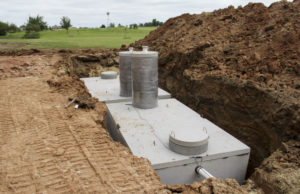While not common anymore, some homes and vacation residences still rely on a holding tank for waste management. Holding tanks are different from septic tanks in that they don’t allow for the content to leach away into the ground. As such, it can fill up a lot faster than a septic tank, requiring a company to come in and empty it more often.
How often we come to pump out your holding tank depends on the size of the tank, the size of the house, and the amount of water you use.
How Often Should I Have My Holding Tank Pumped?


Generally, a holding tank requires pumping every 6-8 weeks. Contrast this with the recommendation for septic tank pumping, which is every 2 to 3 years (depending on factors such as household size and occupancy numbers). A holding tank needs pumping services more often because, instead of releasing treated wastewater into the ground through a drain field like a septic tank, the holding tank temporarily stores waste for removal and transportation to a treatment facility.
However, there is no all-encompassing answer as to how often one should have their holding tanks pumped. It comes down to several different factors, including:
- The number of people using water on the property
- The number of toilets, showerheads, washing machines, and faucets
- How often the home is in use
- The frequency of guests, parties, etc.
An Airbnb or rental property, for instance, will require a lower pumping frequency than a permanent residence. Some property owners prolong the time between pumpings by not allowing items like food particles and grease down the drain, using special toilet paper and tissue to avoid blockages, and only using the residence as a vacation destination.
How Do I Know My Holding Tank Is Full?
Most holding tanks have an alarm that will alert the homeowner that it needs to be pumped, assuming that they have kept the warning system in good shape. Some holding tanks also use dipsticks to determine how full the holding tank is, especially when no working alarm is present.
What Happens If I Don’t Pump My Holding Tank?


If you have a holding tank, do not treat it as a septic system and wait years between pumping – keep a consistent schedule and heed the warning signs. You can work with GFS Services to have our team come at regular intervals, so you don’t have to think about it!


